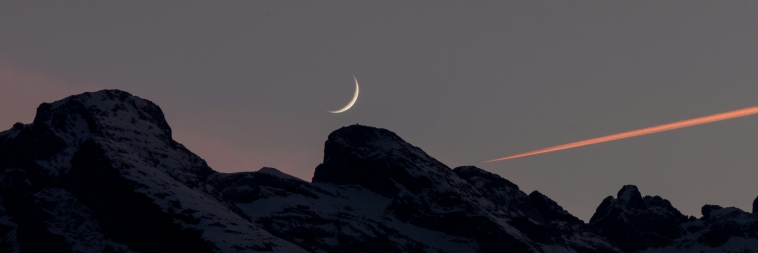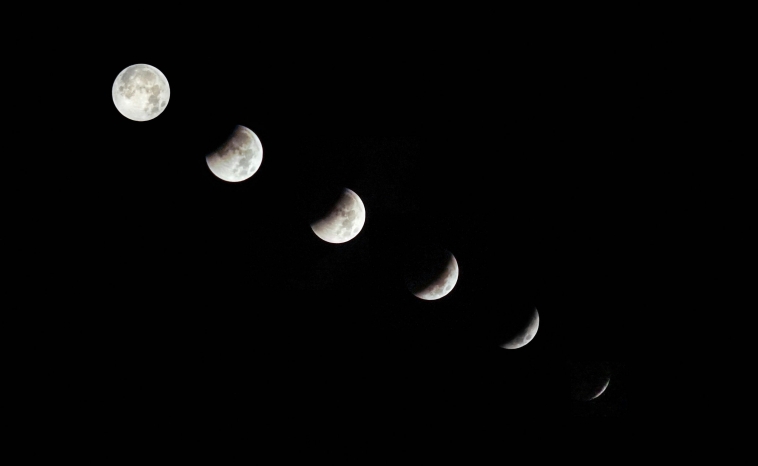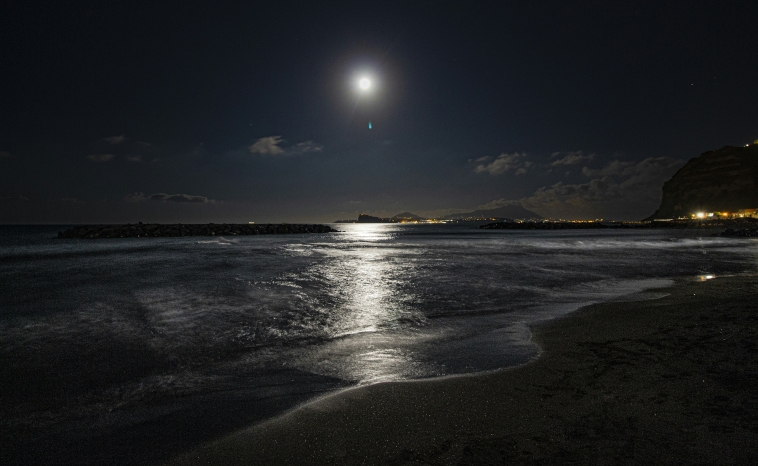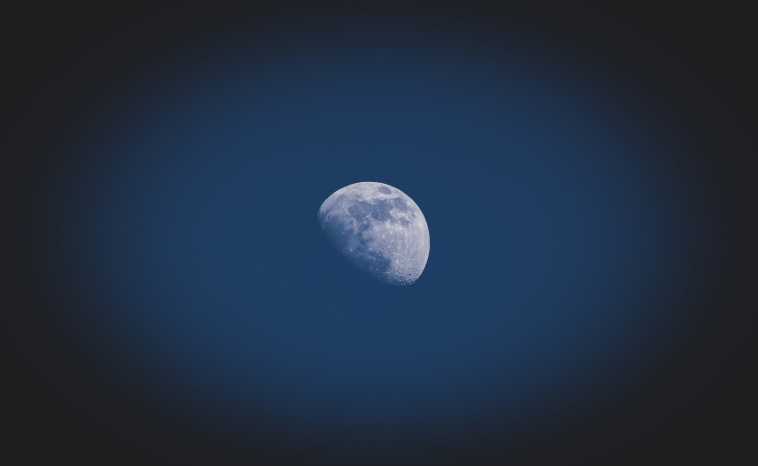What Are the Phases of the Moon?

In this article, we’ll explore the different phases of the Moon, how they occur, and how they affect life here on Earth.
The Moon, Earth’s only natural satellite, plays a pivotal role in shaping our nights and influencing various terrestrial phenomena. However, aside from its fascinating surface features, one of the most enchanting aspects of our satellite is the phases of the Moon. Whether waxing or waning, new or full, understanding these phases enriches our appreciation of the night sky and connects us to the countless generations that have gazed upwards, seeking to unravel the mysteries of the cosmos.
What Is a Moon Phase?
A moon phase refers to the illuminated portion of the Moon as it appears from Earth. The Moon’s orbit around our planet causes this change to occur cyclically. We call the entire cycle a lunar month, which lasts approximately 29.5 days.
During a cycle, the Moon goes through several distinctive phases. As the Moon moves in its orbit, the illuminated portion gradually increases (waxing phases). This culminates in the full moon, when the Earth is between the Moon and the Sun and the entire face of the Moon illuminates. Following this, the illuminated part starts to decrease (waning phases) until it reaches the new moon phase again.
What Are the Phases of the Moon?

The phases of the Moon are a fascinating sight to behold in the night sky, each with its own unique characteristics:
- New Moon: This phase marks the beginning of the lunar cycle. At this time, the Moon is aligned between the Earth and the Sun, rendering it virtually invisible to observers on Earth due to the absence of reflected sunlight visible to us.
- Waxing Crescent: Following the new moon, a sliver of the Moon’s surface begins to illuminate, growing larger each day. This phase symbolises growth and creativity.
- First Quarter: At the first quarter stage, half of the Moon’s surface is illuminated, presenting a perfect half-circle. This time is often associated with decision-making and action.
- Waxing Gibbous: More than half of the Moon is visible as it inches towards full illumination. This phase represents the refinement and adjustment of plans.
- Full Moon: During a full moon, the entire face of our satellite shines brightly, offering a moment of fruition and clarity. Traditionally, the full moon is linked with completion and the illumination of hidden desires or truths.
- Waning Gibbous: After the full moon, the illuminated portion begins to decrease, entering a period of reflection, gratitude, and knowledge sharing.
- Last Quarter: With half of the Moon’s surface lit, similar to the first quarter but on the opposite side, it signals a time for releasing and letting go of what no longer serves.
- Waning Crescent: The final phase before the cycle restarts, this slim crescent of light invites introspection, rest, and rejuvenation, preparing for the new moon.
Each phase, lasting approximately 3.5 to 7 days, represents a step in the continuous cycle of growth, realisation, and renewal that mirrors the ebb and flow of the natural world.
How Do Moon Phases Affect the Earth?

The lunar phases profoundly influence Earth, guiding life rhythms through their impact on the planet’s tides, ecosystems, and agricultural practices.
The gravitational pull between the Earth and the Moon creates tides, with the position of the Moon dictating the tidal range. During the full and new moons, when the Earth, Moon, and Sun align, we experience spring tides, marked by higher high tides and lower low tides. Conversely, during the quarter phases, neap tides occur, with less extreme tidal variations.
Beyond the seas, the Moon’s phases have long been intertwined with agricultural cycles. Farmers use the phases of the Moon to determine optimal planting, growing, and harvesting times for crops, adhering to ancient practices that align human activity with celestial rhythms. In ecological terms, numerous animal species’ behaviours are in sync with lunar cycles, including coral spawning events, which closely match full moon phases.
Moon Phases in History

Throughout history, the phases of the Moon have held significant cultural and historical importance, deeply embedded in the myths, legends, and scientific explorations of various civilisations. Ancient societies, from the Babylonians and Greeks to the Mayans and Egyptians, meticulously observed the lunar cycles, aligning them with their calendars, agricultural activities, and even architectural designs. For instance, some historians believe that ancient Stonehenge was used to predict lunar events, showcasing early human engagement with the Moon’s phases.
In mythology, the Moon often symbolised femininity, mystery, and change, with deities such as Artemis in Greek mythology and Thoth in Egyptian lore embodying lunar qualities. Scientifically, the fascination with the Moon led to groundbreaking developments in astronomy and physics. Galileo’s telescopic observations in the 17th century revealed the Moon’s craters and mountains, challenging the prevailing belief in celestial perfection and laying the groundwork for modern lunar science.
How to Photograph the Phases of the Moon

Capturing the ethereal beauty of the Moon’s phases requires patience, precision, and a basic understanding of night photography. To photograph the Moon, a digital camera with manual settings and a tripod to stabilise the shot is essential. A telephoto lens, with at least 200mm focal length, is perfect for bringing the distant Moon closer to the eye, capturing its details crisply against the night sky.
The best time to photograph the Moon is during the “golden hours” – shortly after sunset or before sunrise – when the sky’s hue complements the Moon’s glow, adding depth to the image. Manual mode allows for control over shutter speed, aperture, and ISO settings. A low ISO minimises grain, while with a small aperture (such as f/8 or higher), you can ensure the Moon’s surface stays in sharp focus. A shutter speed of 1/100 to 1/250 seconds can adequately balance the exposure, preventing the Moon from appearing as a bright, featureless orb. Additionally, a remote shutter release or the camera’s timer function can help avoid camera shake during the shot.
Patience is key, as conditions may not always be ideal. Cloud cover, atmospheric conditions, and light pollution can affect visibility and clarity. Still, with persistence, you can beautifully capture the phases of the Moon, immortalising the celestial dance that has enchanted humanity throughout history.
Conclusion

The phases of the Moon have captivated people for centuries, inspiring myths and legends, guiding navigation, and shaping our understanding of the universe. Moreover, the Moon’s phases play a vital role here on Earth, impacting ocean tides, animal behaviour, and even human emotions.
If you’re looking for a truly stellar gift, consider the OSR Gift Pack. Perfect for astronomy enthusiasts or anyone captivated by the beauty of the night sky, this gift gives them a personalised share of the cosmos, offering an enduring connection to the universe’s majesty and mystery. Capture your celestial moment today, and share the infinite beauty of the stars!

